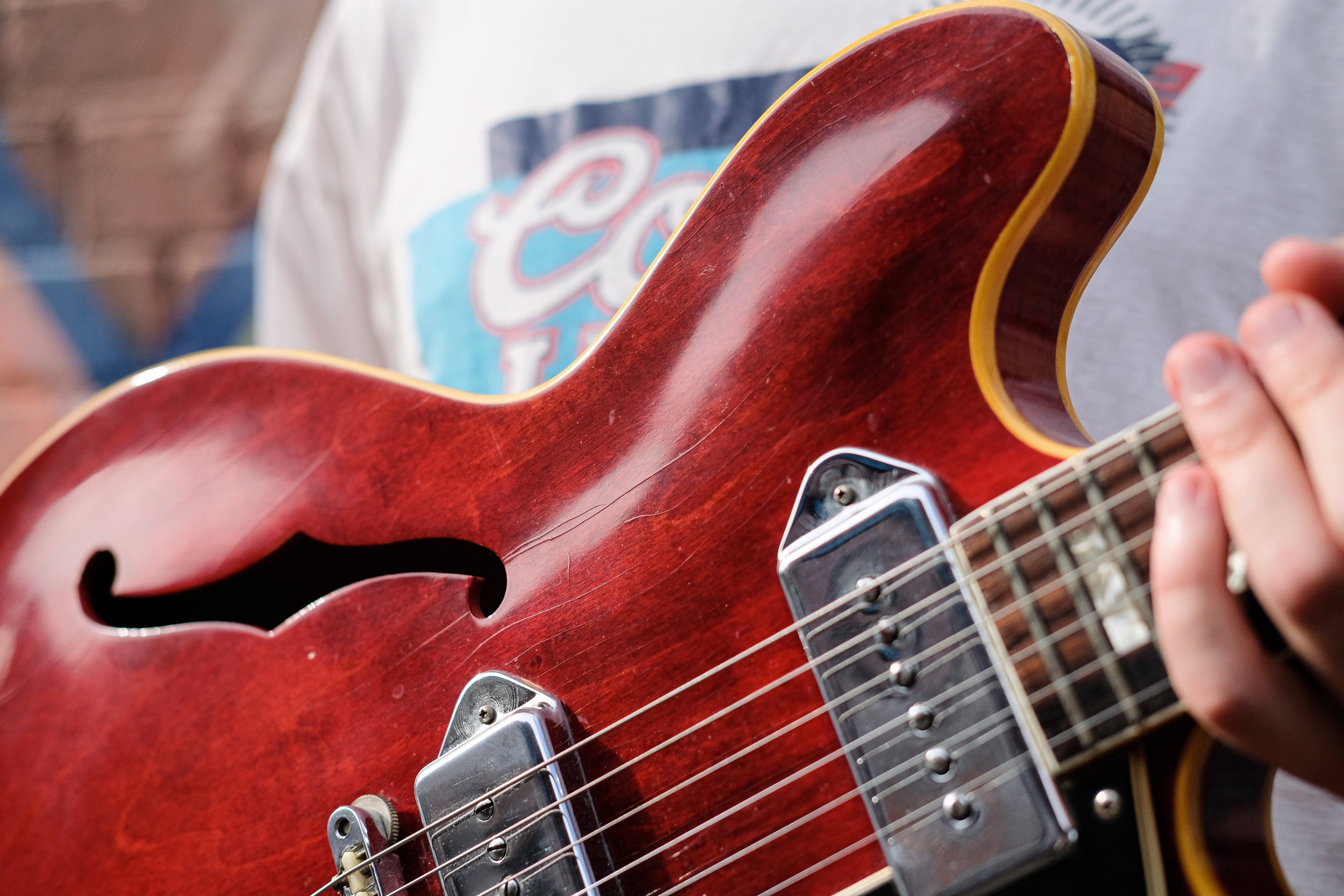Buying a second-hand guitar can be one of the best decisions you make as a player. You’ll often get more guitar for your money, access to discontinued models, and an instrument that’s already been played in and settled. But not every used guitar is a hidden gem. Some are fixer-uppers, and others are outright money pits.
Here's how to sort the diamonds from the duds, and what to look out for before you hand over your cash.
1. Check the Neck and Frets First
This is ground zero. Run your hand along the neck and feel for consistency. Then sight down each side of the fingerboard from the headstock toward the bridge. You’re looking for a clean curve, not dips or warps. If one side has more bow than the other, that could be a sign of neck twist.
Next, check the frets. Are they worn flat or grooved? Are any lifting at the ends? These can affect both playability and intonation. Finally, try adjusting the truss rod gently if you can. Make sure it’s not stripped and that it turns without resistance. A non-functioning truss rod can mean major repair work.
💡 We often see customers bring in “great deals” that end up needing hundreds of dollars in neck and fretwork. A quick check can save you a lot of stress.
2. Plug It In and Listen Closely
For electrics, always plug into an amp and test every pickup position, pot, and switch. Watch out for:
- Scratchy pots or jacks
- Dropouts or hum
- Weak or dead pickups
For acoustics, play every fret and listen carefully. Buzzing, dull notes, or rattles can point to uneven frets or loose internal bracing.
3. Look for Structural Repairs (and Breaks)
Some repairs are completely fine, others are red flags. Check for:
- Repaired or cracked headstocks
- Neck resets (especially on acoustics)
- Heel cracks or body separations
- Bridge lifts or re-glued bridges
Also look closely at any visible glue joints. Amateur repairs often involve over-gluing or the use of epoxy, which is very difficult to reverse or fix cleanly. If it looks messy or out of place, it might be a sign to walk away or budget for major work.
4. Acoustic Guitars: Common Issues to Watch For
If you're buying your first acoustic guitar, especially from somewhere like Facebook Marketplace, take care. We see a lot of acoustic issues from these types of sales, including:
- Bridge lifting or detaching: Look behind the bridge for gaps. If you can slip a piece of paper underneath, it might need regluing.
- High action: Sometimes caused by poor neck angle, which may require a full neck reset.
- Top bellying: A bulge behind the bridge can suggest internal brace failure or long-term tension issues.
- Missing or damaged saddle or nut: These are replaceable, but can indicate the guitar hasn’t been well maintained.
📸 We’ll be adding photos of these issues soon. You can also bring a guitar to us for an in-person check before you commit to a private sale.
5. Pay Attention to Playability
Cosmetics aside, does it feel good to play? Try every fret on every string. Make sure the nut is cut well, that open chords ring clearly, and that the action is playable. Sometimes a simple setup can fix things. Other times it’s a sign of deeper problems.
6. Don't Be Fooled by Appearance
A guitar that’s a little dinged up might be a player’s dream. But something that looks pristine isn’t always healthy underneath. Old strings, dry fretboards, corroded hardware, or tired frets can lurk behind that shiny finish. Trust feel and function, not just looks.
7. Set Your Expectations (and Budget) Wisely
Buying second-hand gets you more value per dollar, but even great finds may need a little work. That’s totally normal. In fact, some of the best guitars we see are “player-grade” pieces. They might have swapped pickups or a missing case, but they sound and feel fantastic.
And they’re usually priced well below collector-grade examples.
8. Buyer’s Checklist: Take This With You
Here’s a simple inspection checklist to help you assess a guitar in person. You can also download the PDF version here.
- Neck is straight (sight down both sides)
- No obvious twist or warping
- Frets are in good shape, not lifting or grooved
- Truss rod works and isn't stripped
- Electronics work properly (if electric)
- No cracks, breaks, or signs of amateur glue work
- Bridge is secure (especially on acoustics)
- Action is playable and nut is properly cut
- No missing or broken parts (e.g. saddle, knobs, tuners)
- Plays in tune up the neck
- Case or gig bag included (bonus)
9. Buy From a Trusted Source
Private sales can be unpredictable. At Replay Guitars, we inspect every second-hand instrument through our in-house workshop. We don’t completely service every guitar, but we make sure it’s playable, functional, and honestly described. If there’s been a repair or mod, we’ll let you know.
Got a guitar you’re unsure about? Bring it in and we’ll happily give it a once-over.
Need Help Finding the Right Second-Hand Guitar?
We've been buying, selling, and servicing second-hand guitars for over a decade. Whether you're after something clean and original or a workhorse with vibe, we’ll help you find the right fit.
Browse our current vintage & second-hand collection
Book a check-up or visit us in-store


0 comments